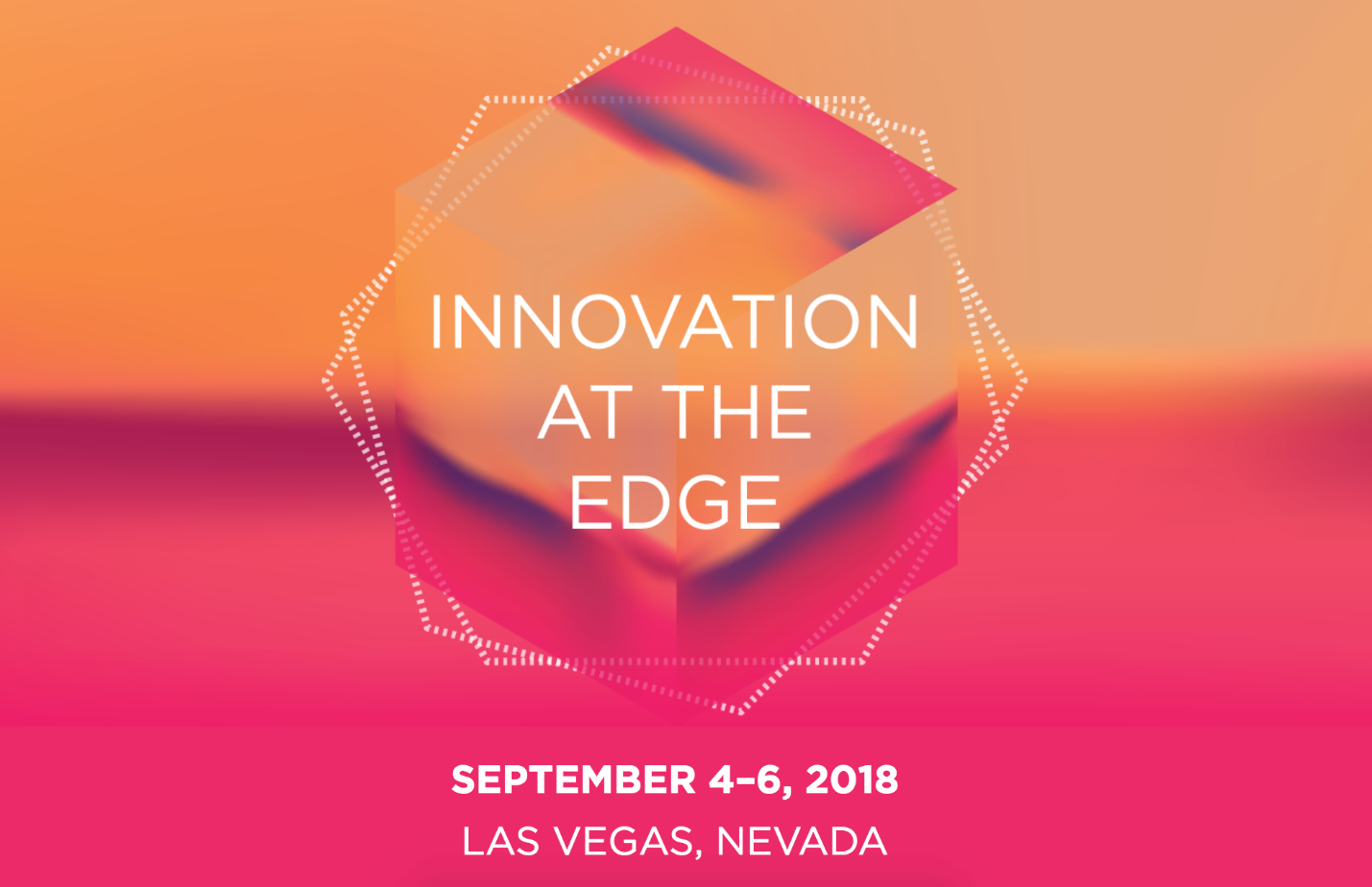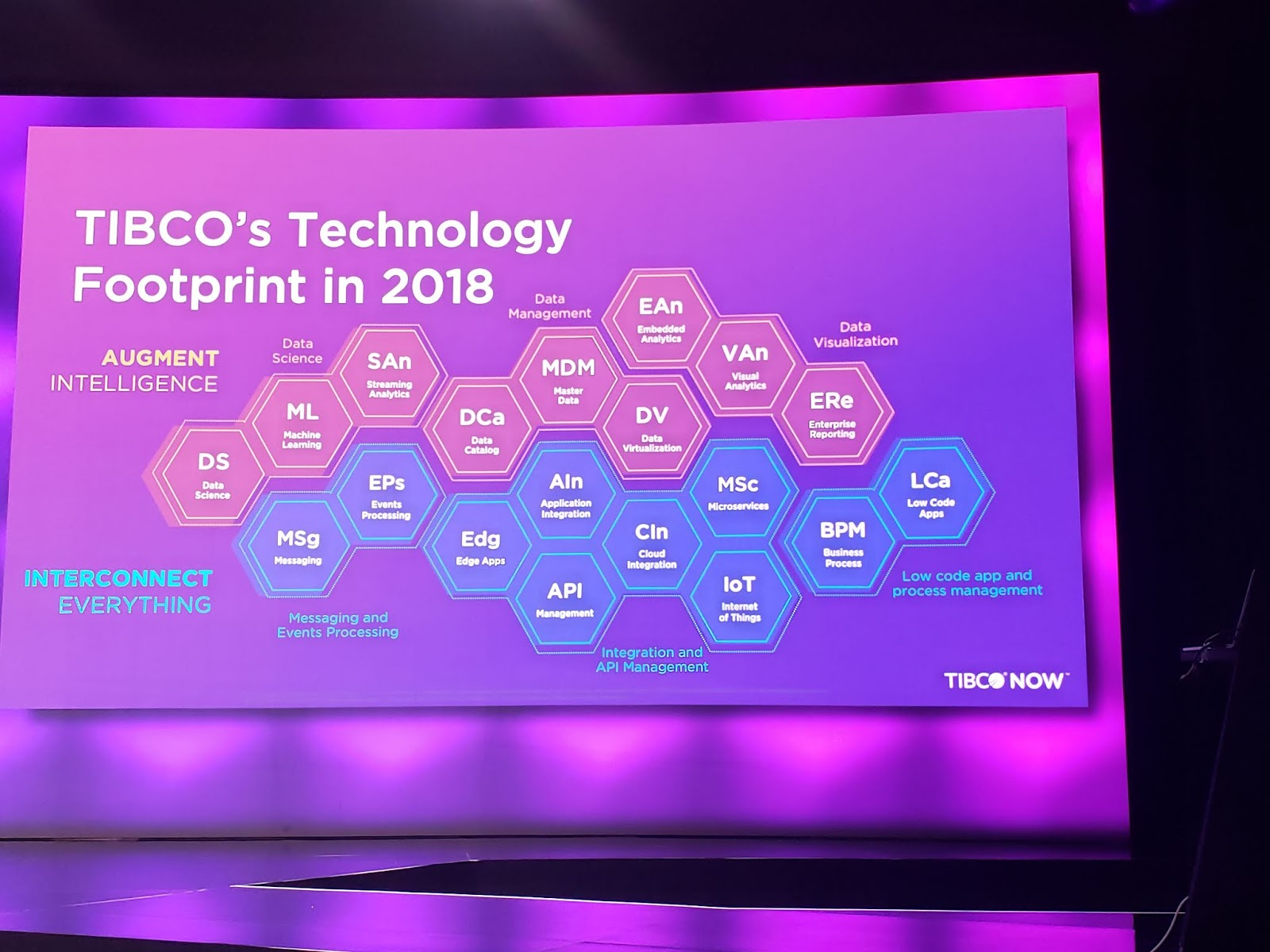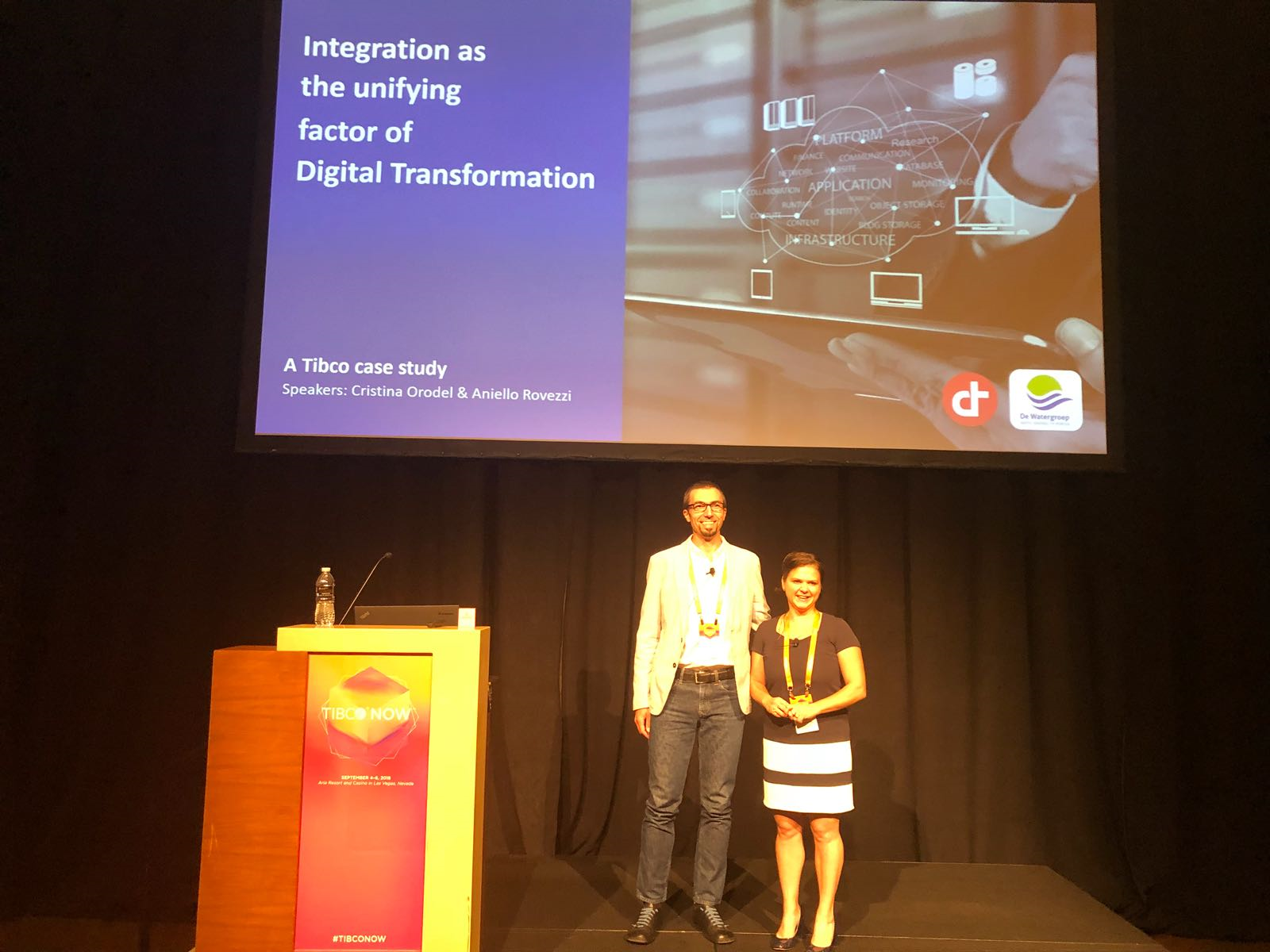Again Las Vegas was the stage of the TIBCO Now 2018 conference. For me, honestly, it has been an exciting experience, not only because of the fact that after multiple years of working with the TIBCO software, I had the opportunity to join their annual conference, but also because I attended with a mix of expectations. And of course I was not only there as a visitor, but also as co-presenter of Devoteam’s TIBCO case with De Watergroep.
Cloud, Microservices, IoT, API Management, Analytics and Open Source: yes, you can do it with TIBCO
In the last years we didn’t hear much from TIBCO about the latest “trendy” buzz words. In Las Vegas I realized that the TIBCO product portfolio has been extended with existing and new TIBCO products in order to meet the future projects’ expectations. A lot of TIBCO products have been migrated into the cloud below the cap of TIBCO Cloud Integration suite. Furthermore TIBCO met the open source community building products on top of existing ones (e.g. Flogo) and worked on giving back to the open source community projects. The strongest point of TIBCO, being low code applications with the possibility to interact with many different protocols, has been reinforced with the power of the cloud. Their partnership with AWS allows to change the way software licenses/subscriptions are offered and many of their products are already available on the AWS Marketplace.

TIBCO BusinessWorks 5: still long life ahead!
I was really surprised to see that most of the technical audience (at least 70-80%) worked or is still working with TIBCO BusinessWorks 5. Obviously the customer’s needs are changing and in order to embrace the new challenges a shift is required, that’s why most of them where really interested in use cases on how to migrate as much as possible seamlessly towards the cloud, without losing the knowledge and the power offered by the tool itself. I’ve summarized these takeaway in two considerations:
- If you don’t want to leave TIBCO BusinessWorks 5, no problem keep using it. There is no official end of life and recently TIBCO released version 5.14. In case you want to bring your own licenses and you want to run it in the cloud, that’s also possible. TIBCO offers a lot of flexibility.
- In case you want to migrate existing code implemented in TIBCO BusinessWorks 5 towards TIBCO BusinessWorks 6, TIBCO BusinessWorks Container Edition, or TIBCO Cloud Integration, then no worries because that’s also possible. The migration tool has been improved a lot and there are several lessons learned about the best way to actually migrate. Moreover the new Eclipse integrated environment allows you to generate artifacts for the run-time environment where you want to deploy it.

Humanizing information, not digitizing humans
I think that this statement, which appeared on one slide during the first general session, summarizes the essence of this conference for me. So far, I have seen a lot of efforts from TIBCO side to keep up their good work from the past and embrace future challenges. What they have done and what they are currently busy with goes in this direction. Their mission: Help humans to manage digital information in a very simple and approachable way, improving their quality of life and not being replaced by the technology, but shift the focus of the humans’ work to more intellectual tasks.
Last but not least: Devoteam and De Watergroep’s TIBCO case study
I had the pleasure to present one of our success stories with our customer De Watergroep. We ran an integration project where the challenge was to refactor the existing implementation in TIBCO BusinessWorks 5, move the architecture into a more hybrid integration model, cloud readiness and multiple API-oriented projects. The challenge in this case was managing the several stakeholders and getting people/workers resistant to the shift in technology. Even though we encountered those difficulties, we were able to manage the project very well, applying our software factory delivery model and combining DevOps practices with a Lego-architectural model.

This project has been already awarded with the Publica 2018 Award and is currently (September 2018) in the run for the Computable Awards 2018. I am very grateful towards TIBCO for giving us the opportunity to present this case study in Las Vegas and share our lessons learned with the attendants.
More blogs about architecture & APIs
BLOG: API Management Architecture – An introduction (part 1)
BLOG: API Management Architecture – Architectural Considerations, Principles and Pitfalls (part 2)
WHITE PAPER: Microservices – The Next Step in IT
WHITE PAPER: The Future of API Management
PAGE: API Management – Consultancy and Implementation
BLOG: Is there still room for Canonical Data Model in a Microservices architecture?